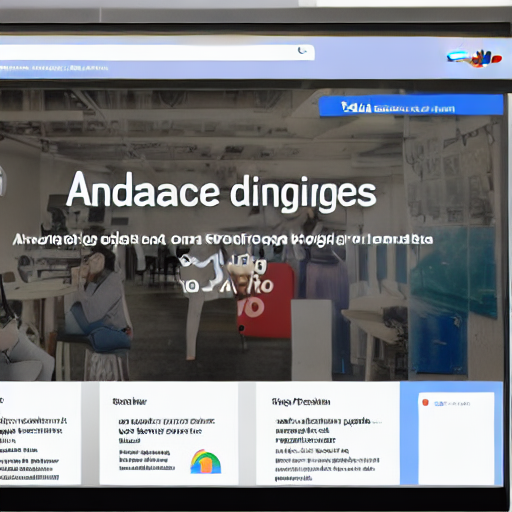

Google Ads campaigns can be incredibly powerful, but simply setting up a basic campaign and hoping for the best rarely delivers optimal results. Leading Google Ad management agencies consistently outperform many businesses, and a significant portion of their success stems from their mastery of advanced targeting techniques. This post delves deep into those techniques, providing insights gleaned from agency practices, offering actionable strategies you can implement yourself. We’ll move beyond the basics and explore the nuances that truly drive performance. Let’s dissect how agencies strategize to connect with the right audience, maximize their ROI, and continuously refine their campaigns.
The core difference lies in a systematic approach. Agencies aren’t just throwing money at ads; they’re meticulously analyzing data, constantly testing, and adapting their strategies based on real-time performance. They invest in sophisticated tools, possess a deep understanding of Google’s algorithm, and possess a strategic mindset. They operate with a defined process, constantly monitoring and adjusting. They also tend to have access to larger datasets and more granular data points than many individual businesses, giving them a significant advantage in understanding consumer behavior. This leads to greater precision in targeting, resulting in lower costs per conversion and higher overall return on ad spend (ROAS).
While age, gender, and location are foundational, true audience segmentation goes far deeper. Agencies utilize multiple data layers to build comprehensive audience profiles. For example, a sporting goods retailer might segment their audience based on:
This level of detail allows them to serve highly relevant ads to individuals who are genuinely interested in their products. A key agency tactic here is building custom intent audiences based on keywords and website searches—capturing individuals actively researching related products. They also leverage Google’s Customer Match feature, uploading customer email lists to find and target existing customers or similar audiences who share similar characteristics.
Creating Custom Intent Audiences involves using Google’s Keyword Planner and URL Builder to identify users actively searching for terms related to your product or service. For instance, a plumbing company could target users searching for “water heater repair near me” or “drain cleaning services”. The more specific the keywords, the more targeted the audience.
Remarketing is a cornerstone of agency success. It’s the practice of showing ads to users who have previously interacted with your website or app. However, agencies don’t just show generic ads; they employ sophisticated strategies:
RLDAs are a particularly powerful feature. They allow you to dynamically display product ads based on a user’s browsing history, using data collected from your website. For example, if a user spends significant time on a page featuring a specific model of smartwatch, an RLDA will automatically show them ads for that exact model – often with real-time inventory information.
DSAs are a completely automated approach to Google Ads. Instead of manually creating keywords and ad copy, DSAs leverage Google’s understanding of your website content. You provide Google with a sitemap of your website, and Google then automatically generates ads that appear when users search for related queries. This is particularly effective for businesses with large product catalogs or frequently changing content. DSAs are inherently remarketing-based, as they’re activated when users enter relevant search terms—a clever integration.
Successful DSA implementation requires careful planning:
Beyond the strategies outlined above, agencies frequently utilize these more sophisticated techniques:
Agencies don’t just set manual bids; they leverage automated bidding strategies. Common strategies include:
Agencies also closely monitor campaign performance and make data-driven adjustments to bids, targeting, and ad copy.
Successfully running Google Ads requires a strategic and data-driven approach. Agencies excel at:
By implementing these strategies, you can significantly improve your Google Ads performance.
**Note:** This is a comprehensive overview and specific strategies will vary depending on your industry, business goals, and budget. Continuous learning and adaptation are essential for success.
Tags: Google Ads, Google Ads Targeting, Agency Insights, Audience Segmentation, Remarketing, Dynamic Search Ads, Conversion Tracking, Predictive Bidding, Location Targeting, Device Targeting, Interest-Based Targeting, Demographic Targeting, Remarketing Lists for Dynamic Ads (RLDAs), Ad Scheduling, Budget Optimization
[…] to users who have previously interacted with your website or app. This is one of the most effective targeting techniques in Google Ads because it targets users who are already familiar with your brand. There are several types of […]
[…] to users who have previously interacted with your website or app. This is one of the most effective targeting techniques in Google Ads because it targets users who are already familiar with your brand. There are several types of […]
[…] Audiences: After establishing a strong Customer Match list, you can leverage Google’s ‘Lookalike’ audience targeting. This identifies users who share similar characteristics with your existing customer base, […]
[…] then crafting an ad that speaks directly to them. This post will equip you with the knowledge and techniques to transform your Google Ads campaigns from generic blasts to laser-focused marketing […]